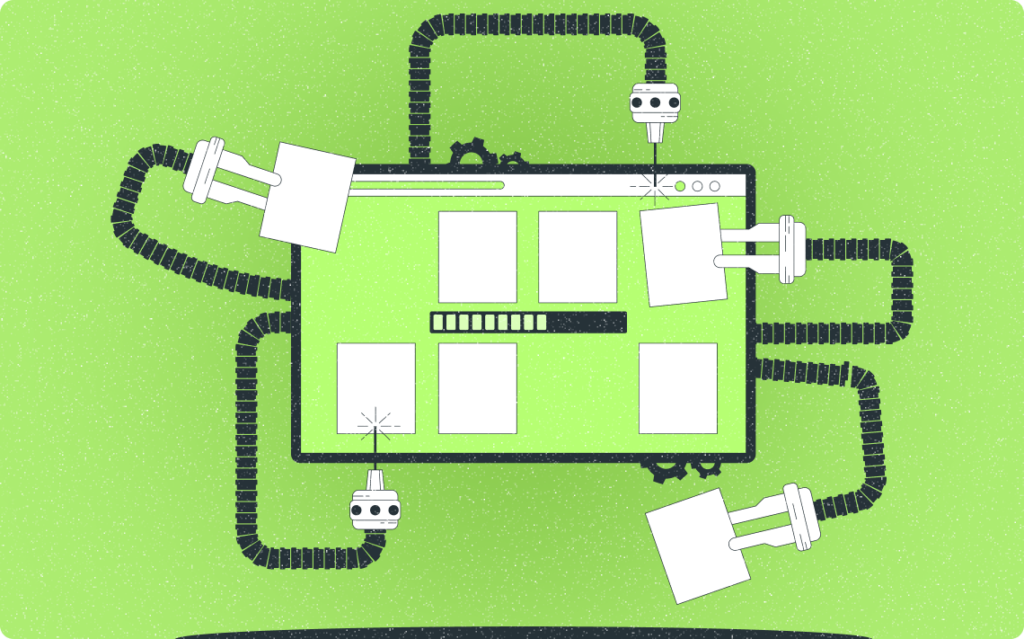Maximizing Productivity with Timeboxing: A Comprehensive Approach

Understanding Timeboxing and Its Benefits
Defining Timeboxing in the Context of Productivity
Timeboxing is a time management method that involves allocating a fixed, pre-determined ‘box’ of time to a specific activity or task, and then completing the task within that time frame. This approach stands in contrast to more open-ended strategies where tasks are worked on until completion, regardless of the time it takes.
The core principles of timeboxing include:
- Setting clear boundaries: By defining start and end times for a task, timeboxing helps to create a sense of urgency and focus.
- Enhancing task prioritization: It forces individuals to prioritize tasks based on their importance and the time available to complete them.
- Improving productivity: The fixed time period encourages a more efficient work pace and helps to reduce the likelihood of procrastination.
In the context of productivity, timeboxing can be particularly effective because it turns the abstract concept of time into a tangible resource that must be managed wisely. By viewing time as a limited commodity, individuals are more likely to make conscious decisions about how they spend it, leading to more deliberate and purposeful work habits.
The Psychological Advantages of Timeboxing
Timeboxing is not just a method to manage tasks; it’s a powerful psychological tool that can significantly enhance mental well-being and focus. By allocating a fixed time period to a task, individuals create a sense of urgency that often leads to increased concentration and productivity. This approach can reduce the anxiety associated with large, undefined projects by breaking them down into manageable segments.
The benefits of timeboxing extend to several psychological aspects:
- Enhanced Focus: The clear boundaries set by timeboxes help to minimize distractions and keep the mind engaged on the task at hand.
- Increased Motivation: The satisfaction of completing a task within a set time can be motivating, providing a sense of accomplishment that fuels further productivity.
- Better Time Awareness: Regular practice of timeboxing cultivates an improved sense of how long tasks actually take, leading to more realistic planning and scheduling.
- Stress Reduction: By preventing tasks from dragging on indefinitely, timeboxing can alleviate the stress and overwhelm that come with open-ended work.
Incorporating timeboxing into one’s routine can also foster a growth mindset, as it encourages reflection on one’s work habits and continuous improvement. The technique’s structure provides a framework for evaluating performance and identifying areas for development, which is essential for both personal and professional growth.
Comparing Timeboxing to Other Time Management Techniques
Timeboxing is often compared to other popular time management techniques due to its unique approach to productivity. Unlike methods such as the Pomodoro Technique, which involves working in short bursts with frequent breaks, timeboxing allocates a fixed period to a task, emphasizing completion within constraints.
- Pomodoro Technique: Focuses on maintaining high levels of concentration in 25-minute intervals, followed by short breaks.
- To-Do Lists: Allow for flexibility but lack the urgency and time constraints that timeboxing imposes.
- Eisenhower Matrix: Helps prioritize tasks based on urgency and importance but doesn’t allocate specific times for execution.
- Getting Things Done (GTD): Aims for a ‘mind like water’ state by capturing and organizing tasks, yet it doesn’t prescribe time limits for task completion.
Timeboxing stands out by not only encouraging task prioritization but also by instilling a sense of urgency and a deadline-driven mindset. This can lead to more focused work sessions and a clearer separation between work and leisure time, which is not always the case with other techniques.
Get more out of your business
Get the best employee engagement content every week via mailing list

Implementing Timeboxing in Daily Routines
Setting Up Your Timeboxing Schedule
Establishing a timeboxing schedule is a foundational step in harnessing the method’s productivity-boosting power. Begin by assessing your daily tasks and determining how much time you realistically need to dedicate to each one. It’s important to be honest with yourself about the time required to avoid overcommitting.
Once you have a clear understanding of your tasks, follow these steps to create your timeboxing schedule:
Remember, the goal of timeboxing is not to create a rigid structure but to provide a framework that encourages focused work and minimizes procrastination. With practice, you’ll find the right balance that maximizes your productivity while maintaining a healthy work-life balance.
Integrating Timeboxing with Task Prioritization
Integrating timeboxing with task prioritization is a powerful way to ensure that you’re not only working efficiently but also effectively. By aligning your timeboxed sessions with your most important tasks, you can guarantee that your focus is directed towards activities that drive the most value.
- Identify Priorities: Begin by listing out all the tasks you need to accomplish. Use a prioritization method, such as the Eisenhower Matrix, to categorize tasks based on urgency and importance.
- Allocate Timeboxes: Assign timeboxes to your high-priority tasks first. This ensures that critical work gets your immediate attention and energy.
- Flexible Scheduling: Be prepared to adjust your timeboxes as priorities shift. Sometimes, unexpected tasks will emerge, and your schedule should be adaptable enough to accommodate these changes.
Remember, the goal of integrating timeboxing with task prioritization is not to fill every minute with work, but to create a structured approach that balances productivity with well-being. By doing so, you can maintain a sustainable pace that fosters long-term efficiency and success.
Adapting Timeboxing for Personal and Professional Tasks
Timeboxing is a versatile technique that can be tailored to fit both personal and professional environments. For personal tasks, timeboxing helps in creating a clear boundary between work and leisure, ensuring that hobbies and self-care are given due importance. It can be as simple as allocating specific time slots for reading, exercising, or spending time with family.
In a professional setting, timeboxing can be integrated into project management frameworks to enhance team productivity and meet deadlines. It encourages focused work sessions and can be used to break down complex projects into manageable chunks. Here’s how you can adapt timeboxing across different spheres of your life:
For Personal Tasks:
- Dedicate time for personal development activities like learning a new skill.
- Set aside time for daily routines such as meal prep or cleaning.
- Ensure you have time for relaxation and hobbies to maintain a work-life balance.
For Professional Tasks:
- Use timeboxing for individual tasks to avoid multitasking and increase focus.
- Implement timeboxed meetings to keep discussions concise and on-topic.
- Allocate time for brainstorming and strategic planning sessions to foster innovation.
By customizing the length and frequency of timeboxes to suit various activities, individuals can optimize their schedules for both personal growth and professional success. It’s important to remain flexible and adjust timeboxes as needed to reflect changes in priorities or unexpected events.

Advanced Timeboxing Strategies for Maximum Efficiency
Customizing Timebox Lengths for Different Activities
The effectiveness of timeboxing can be significantly enhanced by tailoring the duration of each timebox to the specific activity at hand. This customization allows for a more flexible and realistic approach to managing tasks of varying complexity and urgency.
- Short-duration timeboxes are ideal for tasks that require quick bursts of focus, such as checking emails or brainstorming ideas. These can range from 15 to 30 minutes.
- Medium-duration timeboxes work well for activities that need sustained attention but are not overly time-consuming, like writing reports or attending meetings. These typically last between 30 minutes to 2 hours.
- Long-duration timeboxes are best suited for deep work sessions, such as coding, writing, or strategic planning, which may require several hours of concentrated effort.
It’s important to note that the optimal length of a timebox may vary from person to person and can depend on individual work habits and the nature of the task. Experimentation and adjustment are key to finding the most productive timebox lengths for your activities. Regularly reviewing and tweaking the durations can lead to a more personalized and effective time management system.
Utilizing Technology and Tools to Enhance Timeboxing
In the digital age, technology plays a pivotal role in enhancing the timeboxing technique. There are numerous apps and tools designed to assist with setting up and managing timeboxed periods for various tasks. These digital solutions offer features such as countdown timers, reminders, and progress tracking, which can significantly streamline the timeboxing process.
- Digital Timers and Calendars: Utilize digital timers to keep track of your timeboxes. Sync these with your calendar to get a visual representation of your day.
- Task Management Software: Apps like Trello or Asana allow you to create tasks within timeboxes, helping you stay on track with your priorities.
- Productivity Plugins: Browser plugins can block distracting websites during your timeboxed sessions, ensuring focused work.
By integrating these technological tools into your timeboxing strategy, you can minimize manual tracking and maximize focus. It’s important to choose tools that fit seamlessly into your workflow and don’t add unnecessary complexity. Regularly reviewing and adjusting the tools you use is also crucial to ensure they continue to meet your evolving productivity needs.
Overcoming Common Challenges and Avoiding Burnout
Timeboxing is a powerful technique for managing time and increasing productivity, but like any method, it comes with its own set of challenges. One of the primary hurdles is the potential for burnout, which can occur if timeboxes are too rigid or overly ambitious. To prevent this, it’s essential to maintain flexibility within your schedule and allow for breaks.
- Start with realistic timeframes: Avoid setting up timeboxes that are too tight for the tasks at hand. This can lead to frustration and a sense of failure when tasks are not completed within the allotted time.
- Incorporate breaks: Regular breaks are crucial to prevent fatigue. Consider the Pomodoro Technique, which suggests a short break after every 25 minutes of focused work.
- Adjust as needed: Be prepared to reassess and adjust your timeboxes. If you consistently over or underestimate the time needed for tasks, take a moment to recalibrate your timeboxes accordingly.
Another common challenge is the distraction that can derail a timeboxing schedule. To combat this, it’s important to minimize interruptions and create an environment conducive to focus. Use tools like app blockers to prevent digital distractions, and communicate your timeboxing schedule to colleagues and family to ensure they respect your focused time. Remember, the goal of timeboxing is not just to work harder, but to work smarter and sustainably.

Measuring the Impact of Timeboxing on Productivity
Tracking Progress and Analyzing Timeboxing Data
To truly harness the power of timeboxing, it’s crucial to track your progress and analyze the data collected from your sessions. This process not only helps in understanding the effectiveness of timeboxing but also in fine-tuning your approach for better results.
Start by documenting the start and end times of each timebox, along with the tasks completed. This simple step can provide a wealth of information over time, revealing patterns in productivity and potential areas for improvement. Consider the following points when analyzing your timeboxing data:
- Consistency of Task Completion: Are you consistently completing tasks within the allotted timeboxes, or are there specific tasks that often require more time?
- Timebox Length Assessment: Is the duration of your timeboxes appropriate for the tasks at hand, or do adjustments need to be made?
- Distraction Analysis: Note any interruptions or distractions that occur during your timeboxes and strategize ways to minimize them in future sessions.
By regularly reviewing this data, you can make informed decisions about how to adjust your timeboxing schedule and techniques to maximize productivity. Over time, this will lead to a more efficient workflow and the ability to achieve more in less time.
Setting Measurable Goals Within Timeboxes
To harness the full potential of timeboxing, it’s crucial to set clear, measurable goals for each timebox. This practice not only provides direction but also allows for tangible tracking of progress. Start by defining what success looks like for a given timebox. Is it completing a specific task, reaching a milestone, or perhaps producing a certain number of deliverables?
Once the goal is set, break it down into smaller, actionable steps. This breakdown makes the objective less daunting and more manageable within the allocated time. For example:
- Draft the introduction of a report
- Research and compile data for a presentation slide
- Respond to all flagged emails
Ensure that each goal is realistic and achievable within the timebox duration. Overambitious goals can lead to frustration and a sense of failure, which is counterproductive. On the other hand, goals that are too easy may not effectively leverage the timeboxing technique. It’s a delicate balance that requires regular review and adjustment.
Finally, at the end of each timebox, take a moment to reflect on the outcome. Did you achieve the goal? If not, what were the obstacles? Use this insight to refine your approach for the next timebox, setting goals that are challenging yet attainable, ensuring a continuous cycle of improvement and productivity enhancement.
Continuous Improvement and Iteration of Timeboxing Techniques
The journey to mastering timeboxing is ongoing, with continuous improvement at its core. As you become more familiar with the technique, you’ll discover opportunities to refine and iterate your approach. Start by regularly reviewing your timeboxing outcomes. Are you consistently completing tasks within the allotted boxes? If not, consider adjusting the lengths or re-evaluating the task complexities.
To ensure your timeboxing remains effective, follow these steps:
- Reflect: At the end of each week, take time to reflect on what worked well and what didn’t. This can help you identify patterns and make informed adjustments.
- Adjust: Based on your reflections, tweak your timebox lengths or the tasks assigned to them. Remember, flexibility is key to finding what works best for you.
- Experiment: Don’t be afraid to experiment with different timeboxing techniques, such as the Pomodoro Technique for short tasks or longer blocks for deep work sessions.
- Seek Feedback: If you’re using timeboxing in a team setting, gather feedback from colleagues to understand how your time management affects collaborative efforts.
By treating timeboxing as a dynamic process, you can continually enhance your productivity. Keep in mind that small, incremental changes often lead to significant improvements over time. Embrace the iterative nature of timeboxing, and watch as your efficiency and effectiveness soar.

Real-World Applications and Success Stories
Case Studies of Timeboxing in Various Industries
The application of timeboxing transcends various industries, each with its unique set of challenges and demands. Here are a few illustrative examples:
- Software Development: Agile methodologies often incorporate timeboxing to manage sprints, where teams work on a set of features within a predetermined time frame. This approach helps in maintaining focus and delivering incremental value.
- Healthcare: Nurses and doctors use timeboxing to allocate specific time slots for patient care, administrative tasks, and continuing education. This ensures a balanced workload and prioritizes patient needs effectively.
- Education: Teachers apply timeboxing to structure class periods, allocate time for grading, and manage their own professional development. It helps in creating a predictable schedule for students and educators alike.
- Manufacturing: In production lines, timeboxing is used to set time limits for the completion of each manufacturing stage, optimizing the workflow and reducing downtime.
These case studies demonstrate the versatility of timeboxing as a productivity tool. By setting clear boundaries and focusing on one task at a time, organizations across different sectors have reported improvements in efficiency and output.
Interviews with Productivity Experts on Timeboxing
To gain deeper insights into the practice of timeboxing, we’ve reached out to a panel of productivity experts. Their collective wisdom underscores the versatility and effectiveness of timeboxing across various professional landscapes.
- Customization is Key: Experts agree that one of the strengths of timeboxing is its adaptability. Tailoring the length of timeboxes to the task at hand can significantly boost focus and output.
- Consistency Matters: Building a consistent routine with timeboxing is often highlighted as a critical factor for success. It helps in forming habits that can lead to long-term productivity gains.
- Tools and Techniques: Many experts advocate the use of digital tools to streamline the timeboxing process. From simple timers to sophisticated project management software, the right tools can make timeboxing more efficient and enjoyable.
The interviews also reveal that while timeboxing is a powerful technique, it is not a one-size-fits-all solution. It requires experimentation and personalization to find the optimal setup that works for an individual’s unique workflow and preferences.
Adapting Timeboxing to Different Work Environments and Cultures
Timeboxing is a versatile productivity technique that can be tailored to fit a variety of work environments and cultural contexts. The key to successful adaptation lies in understanding the unique workflow and social dynamics of each setting.
- For Corporate Offices: Timeboxing can be integrated into project management software to help teams stay on track with deadlines. It’s important to consider the meeting culture within the office and adjust timebox lengths to ensure that they align with the typical duration of meetings and collaborative sessions.
- In Remote Work Settings: The flexibility of timeboxing is particularly beneficial for remote workers who may have to juggle different time zones and personal responsibilities. It’s crucial to establish clear communication channels so that timeboxed tasks are well-coordinated among team members.
- Within Creative Industries: Timeboxing can foster creativity by providing structured time for brainstorming and iteration. However, it’s essential to allow for flexibility within timeboxes to accommodate the non-linear nature of creative processes.
- Across Different Cultures: When implementing timeboxing in a multicultural environment, it’s important to be mindful of varying perceptions of time and punctuality. Customizing the approach to respect cultural differences can enhance collaboration and productivity.
By considering these factors, organizations can effectively adapt timeboxing to their specific needs, fostering a culture of efficiency and respect for time across diverse work environments and cultural landscapes.
Conclusion
In conclusion, timeboxing is a powerful technique that can transform the way we approach our tasks and manage our time. By allocating fixed time periods to activities and adhering to these limits, we foster a work environment that encourages focus, discipline, and efficiency. This comprehensive approach not only helps in maximizing productivity but also in reducing stress and enhancing work-life balance. As we have explored throughout this guide, the benefits of timeboxing are manifold, and its application can be tailored to fit individual needs and preferences. Whether you are a seasoned professional or just starting out, incorporating timeboxing into your routine can lead to significant improvements in both personal and professional spheres. Embrace the structure and clarity that timeboxing provides, and watch as your productivity soars to new heights.
— The Monitask Team
Frequently Asked Questions
How does timeboxing provide psychological advantages?
Timeboxing can reduce stress and anxiety by breaking down tasks into manageable chunks. It also provides a clear structure to your day, which can increase motivation and satisfaction as you complete each timeboxed task. Additionally, the technique can help prevent procrastination by setting clear deadlines.
How does timeboxing compare to other time management techniques?
Unlike more flexible techniques like the Pomodoro Technique or to-do lists, timeboxing is more rigid, requiring you to work within a set period. This can lead to better time estimation for tasks and a stronger commitment to deadlines. It also forces you to prioritize tasks more effectively.
How can I integrate timeboxing with task prioritization?
Begin by identifying your most important tasks and allocate timeboxes to them during your peak productivity hours. Less critical tasks can be scheduled for times when you’re typically less focused. This ensures that high-priority tasks receive the attention they need.
What are some common challenges with timeboxing and how can I avoid burnout?
Common challenges include underestimating the time required for tasks and overloading your schedule. To avoid burnout, ensure that you include breaks in your schedule, set realistic timeboxes, and be flexible enough to adjust your plan as needed.
Can you provide examples of how timeboxing has been successfully applied in different industries?
Yes, timeboxing has been used effectively in software development to manage sprints, in marketing departments to coordinate campaign launches, and in personal settings to balance work and personal life. Success stories often highlight improved project completion rates and enhanced team productivity.


